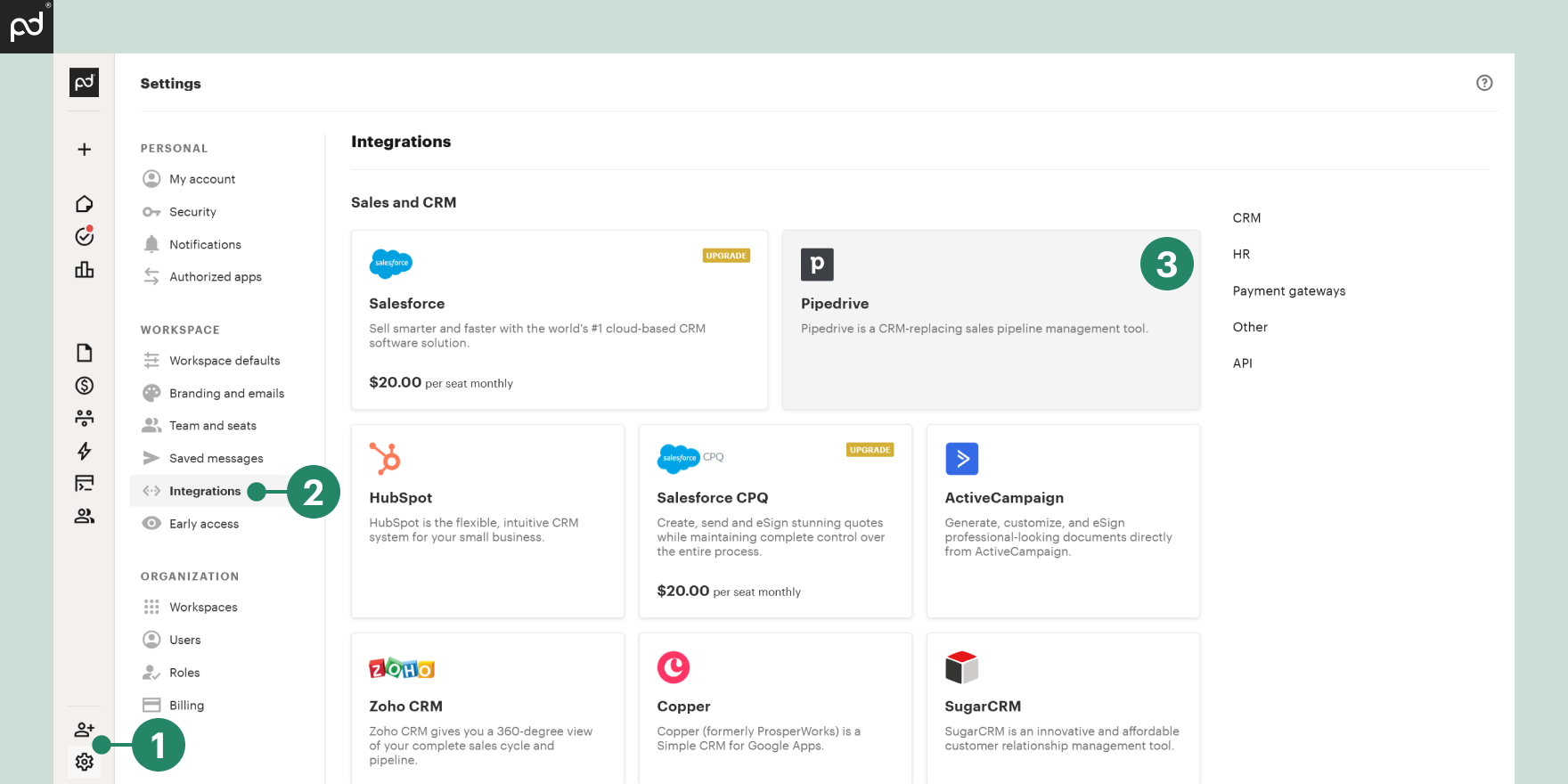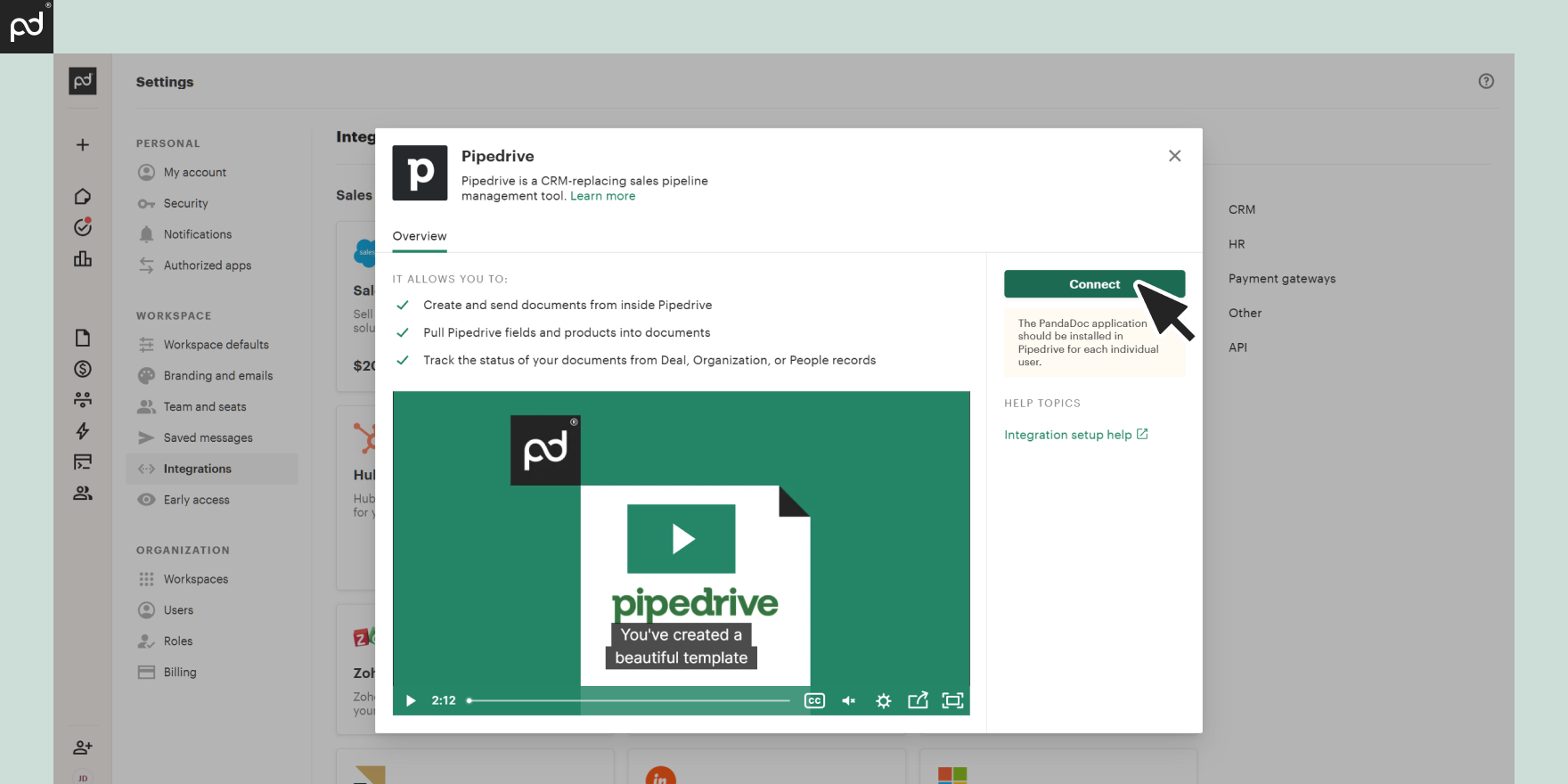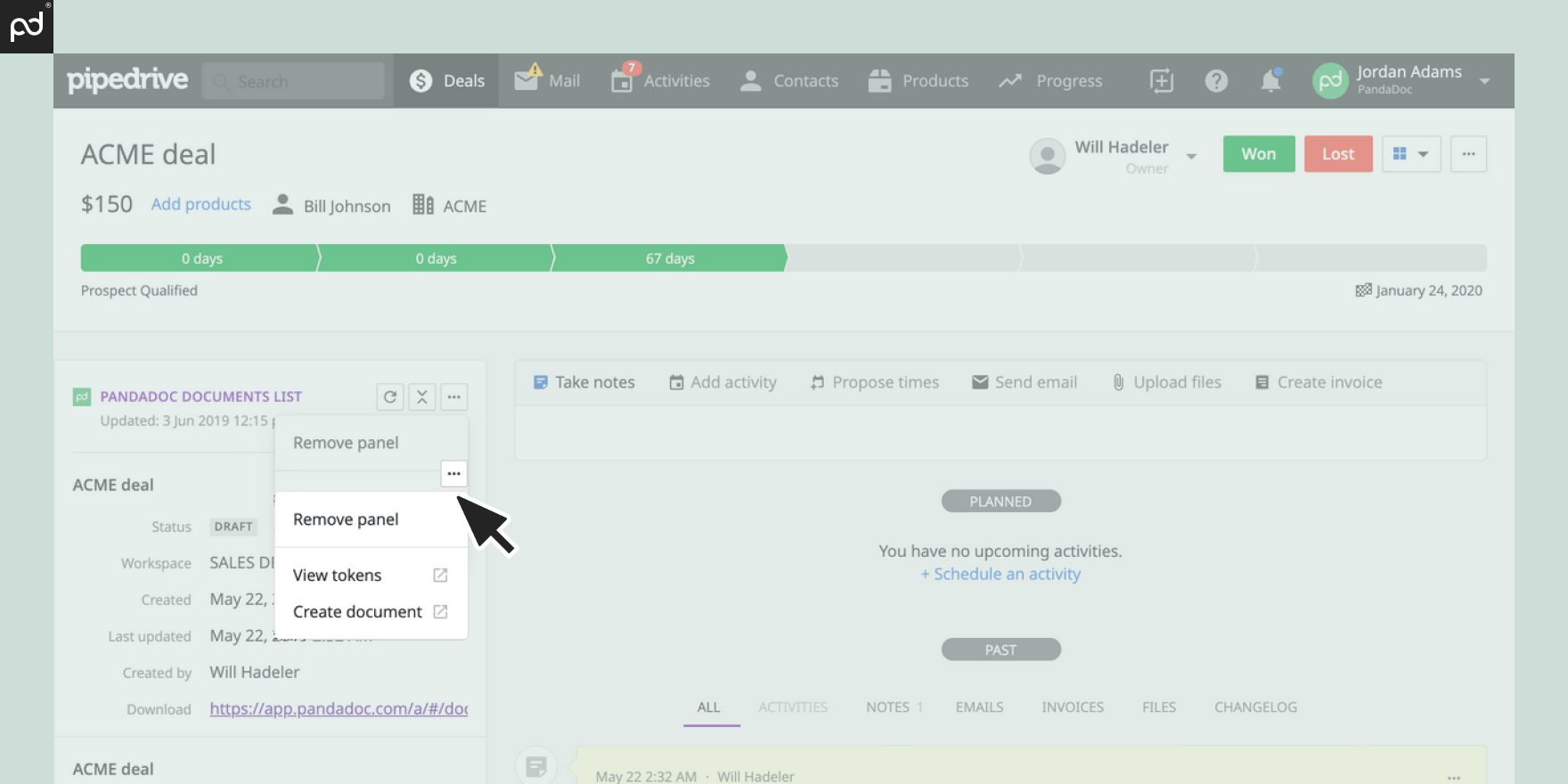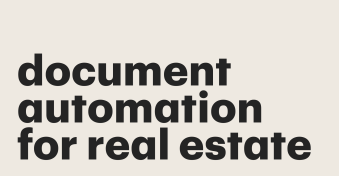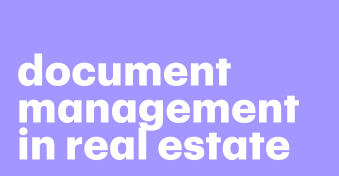Even with always-on devices across our desks or in our pockets, do you ever feel it’s become harder and harder to manually keep track of your deals as your real estate business grows?
Without an organized solution, that extra manual work not only takes too much time — it may also lead to poor customer experiences.
And no one can afford that in today’s highly competitive real estate market.
Enter customer relationship management (CRM) software tailored specifically to accommodate the commercial real estate (CRE) market.
Designed to help realtors, real estate agents, and brokerages offer an impeccable customer experience, commercial real estate CRMs help manage client interactions, track property listings, oversee deals and transactions, and streamline communications across various parties and stakeholders.
Let’s explore further and learn how CRM solutions can help you close deals faster.
Key takeaways:
- Best for customization and integration: Salesforce CRM
- Best for visual sales pipeline management: Pipedrive CRM
- Best for real estate marketing and property management: SharpLaunch CRM
What is a CRM in commercial real estate?
A commercial real estate CRM is a type of customer relationship management software specifically designed to meet the needs of commercial real estate professionals.
This includes features like contact management, deal tracking, property databases, and analytics tools to improve decision-making in commercial real estate operations.
While similar in structure to CRMs designed for other industries, the software is packed with useful tools for CRE applications.
For example, instead of just collecting the phone numbers, emails, and addresses of multiple clients, a real estate CRM will likely have features that document deal details like:
- Marital status
- Area/zip code
- Budget
- Timeline for buying/selling
- Pre-approval status
5 benefits of implementing a commercial real estate CRM
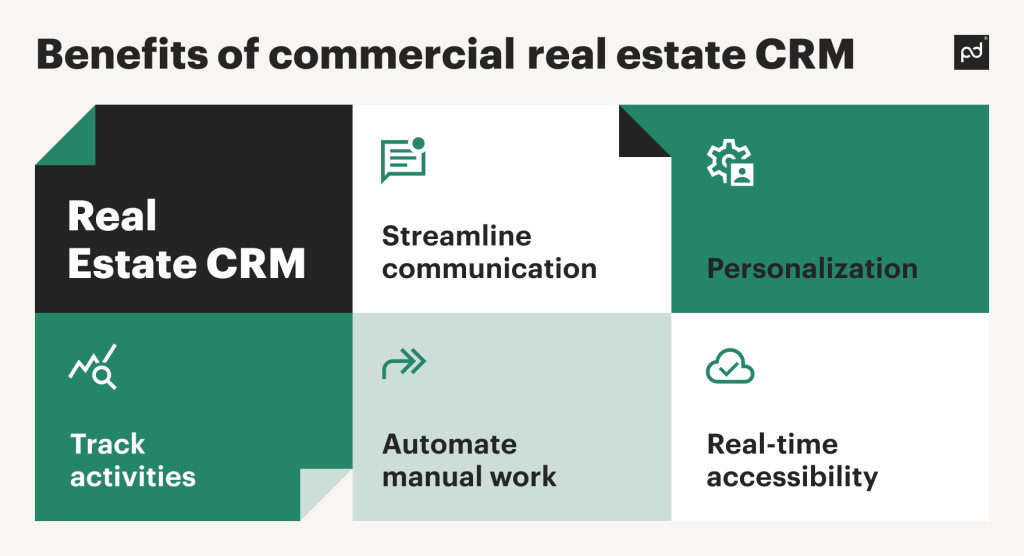
Streamline communication
One of the key goals of any CRM used by real estate professionals is to centralize data and communication channels.
Features like notifications, task reminders, and automated messaging help brokers and agents stay proactive, responsive, and engaged.
This, in turn, enables stronger and smoother client relationships for faster deal closure.
Easily track activities
Some real estate CRMs contain robust analytics and reporting features, allowing businesses to track team member activities.
Depending on the functionality of the chosen CRM, realtors may track and manage calls, emails, meetings, and property showings.
In addition, agents or their brokerage can monitor key indicators like deal closure rates, response time, productivity, and lead conversion rates.
Automate manual work
While CRM solutions assist in repetitive tasks, integration with document management software is where automation really comes alive.
Doing so allows real estate professionals to focus on relationship building instead of worrying about documents being quickly created, signed, and updated according to due dates. Communication is enhanced between all parties involved.
Add personalization
Commercial real estate CRMs also allow brokers to profile the characteristics of active buyers.
Depending on the goal, you may prioritize discussing what your buyers are looking for in a property, their preferences as far as location, budget, etc.
You can then use this data and let your CRM help find buyers to find a perfect match from properties in your database, ensuring client satisfaction and selling your properties quicker.
Enable real-time accessibility
As a real estate professional, you are on the go most of the day, and no doubt want to carry as little as is necessary when you go to property showings.
Having a CRM packed with reminders allows real estate agents to always stay informed, irrespective of their location.
Remote access, available through any gadget, helps realtors and agents immediately address concerns in case any issues arise for better client service.
Key features to look for in a commercial real estate CRM
Aside from choosing a customizable CRM calibrated for real estate professionals, you’ll also want one that serves as the hero behind the scenes rather than behaving like a demanding child requiring extra attention whenever you have a few free minutes.
Identify the key features most important to your sales processes and check whether potential CRMs suit your current workflows or needs. Examples of effective CRM systems include:
Deal management
You want your CRM to effectively take care of your documentation, so the following features should be a top priority:
- Track deals from first interaction to closure and beyond
- Set up and monitor meetings;
- Add tasks, set deadlines, and track task progress
- Offer customization of a dashboard for a clear and visually appealing sales funnel picture
- Provide 24/7 customer support
- Set alerts and reminders to foster real-time communication (ideally through preferred communication channels chosen by a client)
- Collaborate with team members and manage workflows
- Generate reports and agreements for deals
As an example, this is how a Salesforce opportunity might look when integrated with PandaDoc:
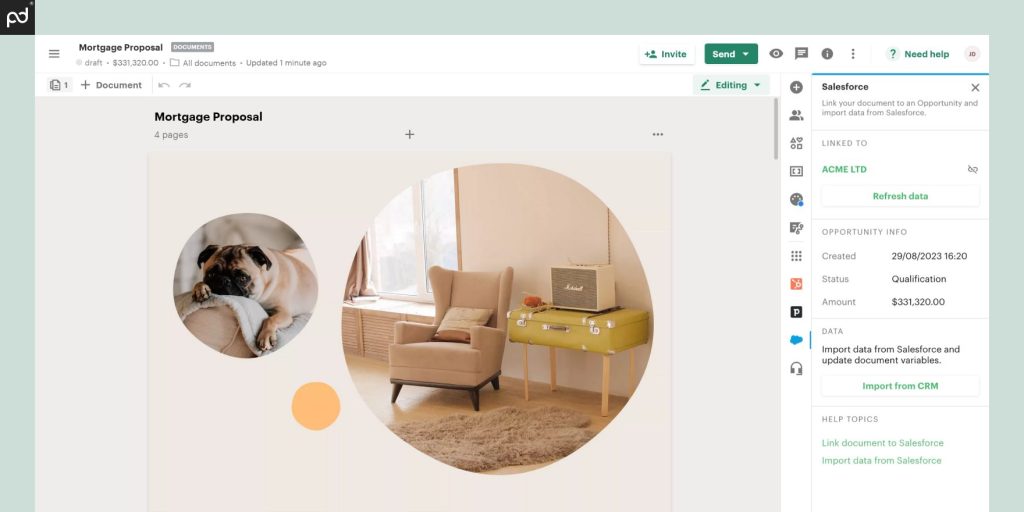
Commission tracking
Keeping track and monitoring commissions enables real estate pros to gain financial insights into their actual income and set realistic financial goals. Therefore, make sure your CRM is able to:
- Manage and track commission payouts
- Set up commission rates for each agent and deal
- Calculate payouts based on deal value
- Monitor the status of commission payments
Property data tracking
Expect your CRM to store all the property data in one place for easy and quick access — make sure it is able to track the following parameters:
- Expiring leases
- Sales transactions
- Property listings
- Status (active, pending, sold, rented, withdrawn, terminated, or expired)
- Price reductions/increases
Integrations
Any modern commercial real estate CRM has a rich set of integrations with document management, financial, marketing, and sales software.
When setting up a cohesive ecosystem to automate and manage the entire deal workflow, choose a CRM that:
- Supports integrations with pro tools like PandaDoc, Outlook, Gmail, etc.
- Manages email communications within the CRM platform
- Centralizes and organizes all email correspondence
Communication options
Ensure regular and up-to-date client collaboration and communication by choosing a CRM system that has the following:
- Visual representations of data
- User tags (for tagging and assigning leads to team members)
- Advanced search options
- Easily stores and retrieves all client data (emails, calls, meetings, communication history, client needs, and preferences)
Contract generation and management
With numerous moving parts in a regular real estate workflow, you’ll want your team to use a CRM that automates routine document tasks such as:
- Contract creation from templates
- E-signing contracts and NDAs within one CRM
- Collaborate with colleagues in a secure virtual workspace
- Manage deal pipelines and document sharing
Here is another example of how seamlessly PandaDoc integrates with Salesforce by importing pricing data directly from the CRM:
Caption: PandaDoc template with updated pricing and details imported from Salesforce CRM.
Alt Tag: Screenshot of a PandaDoc hardware proposal template showing updated pricing and subscription agreement details, with data imported from a Salesforce opportunity.
Top 3 CRM tools designed for commercial real estate
With the rich choice of commercial real estate CRM tools available, it may seem hard to find the right ones to select, start trying out, and put your trust in.
Simplifying the task for you, we assembled three of the most promising ones based on functionally/price ratio:
Salesforce CRM
Salesforce CRM is one of the leading solutions for the commercial real estate domain, allowing brokers and agents to streamline their day-to-day operations, manage client relationships, and drive sales growth.
This software has advanced customization options, making it easy for all real estate pros to tailor the CRM functionality to their specific processes and deal workflows.
Salesforce supports a variety of third-party integrations to create, e-sign, manage, and auto renew contracts from a Salesforce deal.
In fact, as a further boost to integrating the two platforms, PandaDoc offers Salesforce automation software that streamlines all end-to-end workflows.
Pricing: Essentials ($25/user/month), Professional ($80/user/month), Enterprise ($165/user/month), and Unlimited ($330/user/month). Th
G2 Rating: 4.3/5
Customer support: 24/7 access to phone support, email support, live chat, support tickets, and an extensive knowledge base.
Free trial: a 30-day free trial period
Ease of use: 4.5/5
Key Salesforce features:
- Lead management to capture, qualify, and nurture leads effectively.
- Contact management can easily manage contracts, agreements, deal data, and client information within one space.
- Customization to easily tailor CRM to specific needs by creating custom fields, workflows, and reports.
- Integration with most popular third-party tools to expand the functionality of the platform.
Pipedrive CRM
Pipedrive CRM is specifically designed to meet the needs of commercial real estate professionals.
With its vast range of features and functionalities tailored to streamline deal workflow, you can easily set up Pipedrive for a quick project kick off.
This CRM also has open-source APIs for seamless integrations with tools like PandaDoc, Gmail, Zoom, Microsoft Teams, etc.
Pricing: Essential ($14/user/month), Advanced ($29/user/month), Professional ($49/user/month), Power ($64/user/month) and Enterprise ($99/user/month).
G2 Rating: 4.2/5
Customer support: email support, phone support during business hours, support tickets, and an extensive knowledge base.
Free trial: a 14-day free trial
Ease of use: 4.4/5
Key Pipedrive features:
- Pipedrive management provides a visual representation of the sales pipeline, allowing brokers to track the progress of deals and identify opportunities for optimization.
- Contract management for a centralized database of key relationships.
- Customization to ensure seamless setup and contribution to your team’s goals.
- Integration to connect CRM with email marketing tools, accounting software, document creation, and property management systems.
Here is how document status can be tracked in a Pipedrive when it is integrated with PandaDoc:
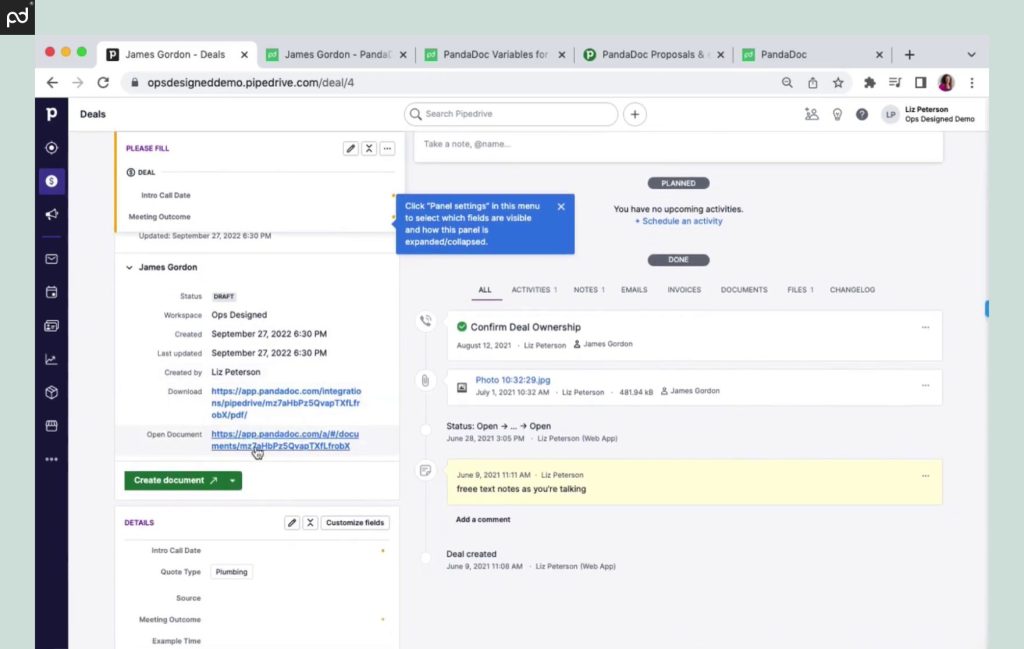
SharpLaunch
As an all-in-one CRM system, SharpLaunch offers an easy-to-use suite of marketing tools specifically developed for real estate agents who want to improve asset visibility, streamline marketing activities, and save time.
On top of that, SharpLaunch is built on top of Salesforce.
This means real estate teams can sync data in real time between the platforms and benefit from Salesforce integrations like PandaDoc even if they aren’t automatically included into the SparpLaunch feature set.
Pricing: Plan requests can be made through a form directly on the CRM’s website.
G2 Rating: 4.5/5
Customer support: almost instant response via email support and a vast knowledge base.
Free trial: yes
Ease of use: 4.5/5
Key features of SharpLaunch:
- Property management to quickly organize and manage brokers’ property portfolios (property details, photos, locations, and specifications)
- Leasing and tenant management to manage tenant relationships (track lease agreements and monitor expiration dates).
- Deal tracking and pipeline management to monitor the progress of deals from initial contact to closing.
- Integration options to power up the platform with third-party applications, reducing data entry and helping streamline contact management.
This is how it looks within the SharpLaunch CRM:
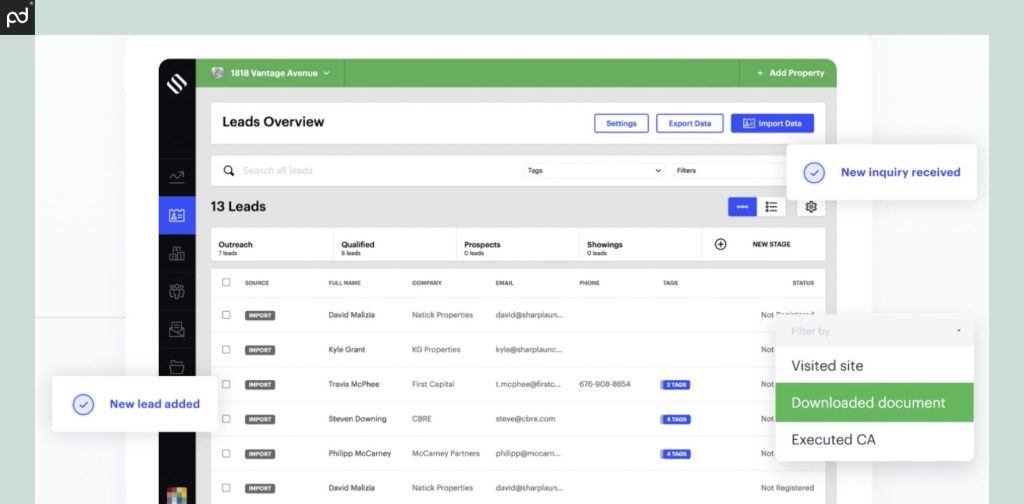
Implementing CRM for commercial real estate
Think of CRM software implementation as changing how your real estate organization works. In other words, planning all the steps is as important as the actual launch:
Set up accounts and assign roles
Make sure that everyone on the team knows their responsibilities and abilities within the CRM.
Assign different access levels to members, based on decision-making authority.
Migrate and import data
Import all existing data fields, matching them with the old system’s workflow for a smooth transition, cleaning out duplicates, and deleting outdated information.
Or simply treat the transition as a fresh start by customizing all fields to meet new business needs.
Back up the original data
Always save source data to reference it in case of mistakes during migration.
Integrate third-party tools
Enhance CRM functionality by integrating tools like PandaDoc, Gmail, Outlook, Zoom, and others based on daily usage and required features.
Onboard your team
After migration, familiarize your team with the new workflow by creating guidelines on user roles, access, and data fields.
Consider hiring a CRM professional so they can perform webinars or write guidelines for you.
Test and gather feedback
It’s always best to give your new CRM a test run and gather the team’s feedback before diving in straight away from the very start.
Final thoughts on expanding your realtor’s CRM functionality
You can enjoy many more functionalities aside from what CRM offers by merging it with the rest of your technology stack.
Integrating your CRM with PandaDoc allows you to manage deals from the first contact and through the entire contract lifecycle.
Utilizing features like document creation via customizable templates, e-signing and document tracking, all without constantly switching between apps, means more properties get sold and more deals get done. Everybody wins!
Disclaimer
PandaDoc is not a law firm, or a substitute for an attorney or law firm. This page is not intended to and does not provide legal advice. Should you have legal questions on the validity of e-signatures or digital signatures and the enforceability thereof, please consult with an attorney or law firm. Use of PandaDoc services are governed by our Terms of Use and Privacy Policy.
